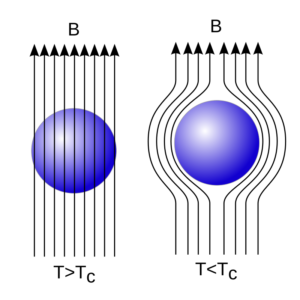Davisson Germer experiment
This experiment provide the experimental confirmation of de Broglie hypothesis

Experimental arrangement of Davisson Germer experiment
- F = Filament, made of tungsten.
- The electrons are accelerated from F on heating it by a low tension battery.
- G = An anode containing a fine hole.
- C = Nickel crystal, the electrons are strike on this crystal and then scattered in all possible directions.
- D = Detector, which can be rotated on a circular scale S, and this detector is used to measure the intensity of electrons scattered by C.
- φ = Angle between the incident electron beam on crystal and the scattered direction of electron.
- If we plot a graph between φ and I (intensity of scattered electron beam by C) at different V.

Conclusions
- I depends on φ.
- There is always a bump or kink occurs in the curve at φ = 50°.
- As the value of accelerating voltage V increases the size of bump increases.
- The bump become maximum at V = 54 volt.
- On further increasing the value of V, bump starts to decrease.
- According to de Broglie
or λ = 1.67 Å
- From Bragg’s law
2d sin θ = nλ
- Here n = order of diffraction, d = inter-planar distance, and θ = glancing angle of diffraction
- For X-ray analysis Ni works as plane diffraction grating
- d111 = 0.91 Å for Ni crystal
- Since diffraction angle φ = 50°
- Therefore glancing angle θ = (180 ー50) / 2 = 65°
∴ 2 × 0.91 sin 65° = 1 × λ
or λ = 1.65 Å
- The excellent agreement between the two results for wavelengths (λ) confirms de-Broglie hypothesis for electrons.
- It means the electron beam of energy 54eV at 50° angle posses strong diffraction, which shows the wave nature and Ni crystal works as diffraction grating.
To know more about Davisson Germer experiment click here for English and click here for bilingual (Hindi/English)


